Plitvice (Land of the Falling Lakes)
I have just returned from Plitvice National Park in Croatia. This is my fourth visit to the national park; my previous workshop there and other visits were always in the spring. All of the images below were photographed with a Nikon D810 and a range of lenses from 16mm through to 200mm.
Plitvice is the most famous of Croatia’s eight national parks and is the country’s largest, some 300 square kilometers in size. It was designated in 1949 and received UNESCO’s world heritage status in 1979. The park is located in the mountainous karst region of central Croatia near the border with Bosnia and Herzegovina. It’s a truly captivating place with a collection of sixteen turquoise-coloured lakes, which are connected to each other by an elaborate series of streams and waterfalls.
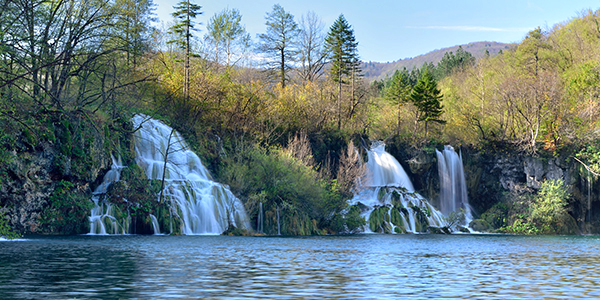
Waterfalls at Milanovac Lake.
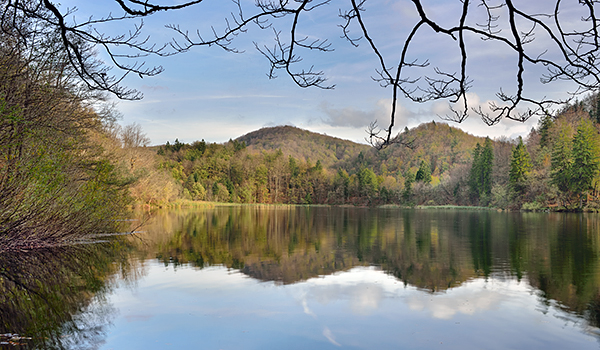
Gradinsko Lake.
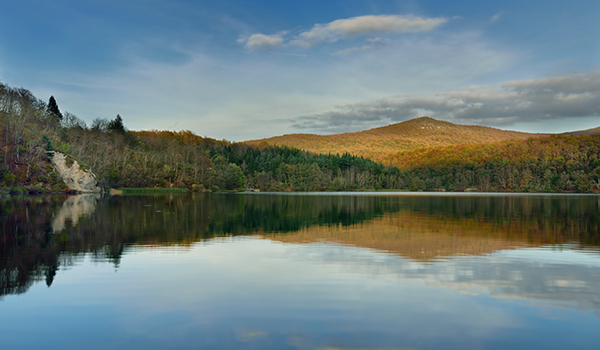
Gradinsko Lake.
The formation of the lakes are the result of the amalgamation of various river systems; all are interconnected producing a continuous water flow that runs from the highest lake cascading down through the others, producing an impressive series of waterfalls, which have an amazing array of colours, ranging from turquoise through to green. This variation in colour depends largely on the depth of the pools, mineral content and the intensity of sunlight.

The Galovac Lake waterfall complex.
The lakes are divided into upper and lower systems. Protection from pollution of the whole ecosystem in the park is paramount and taken very seriously by the authorities. All of the boats on the lakes are electric, and no vehicular traffic is permitted in the park. When you stand and gaze into it’s crystal clear waters you can appreciate why a place such as this needs protecting.
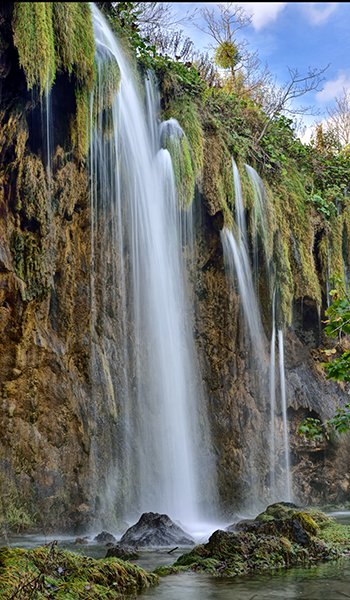
Mali Prstavac waterfalls.
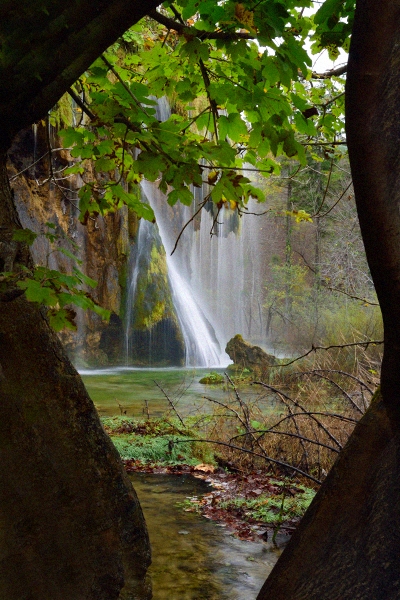
Mali Prstavac waterfalls.
There is a network of clearly marked paths with much longer trails, which involve several hours of walking for the more adventurous hiker. The upper lakes (the larger group) are situated among dense forests comprised mainly of beech and fir and connected by numerous waterfalls systems. There are also a number of paths that connect between the lakes, allowing you to get up close to most of the waterfalls.
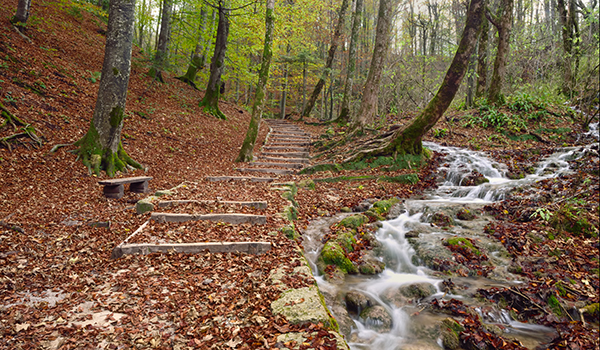
Woodland paths beyond Galovac Lake.

Lake shore trail at Jezero Kazjak.
Access to others is via boardwalks, most of which are not “vibration free“. Pollution-free electric boats also ferry you between the larger lakes to access other paths and trails throughout the park. A shuttle bus operates in the park, and you can walk part of the way and then get the bus back to one of the entrance points. The upper lakes are further away from the central hub of the park and therefore, generally less crowded. The lower lakes are smaller, shallower and more popular with coach tours that frequent the park on a daily basis. However, they do contain some of the largest waterfalls, including Veliki Slap at 256 ft., which is the highest in the national park. This area tends to be more popular with day-trippers that don’t have the time to explore the whole area, but it’s well worth exploring locations in between the trees, especially on the high paths where there are some nice views.
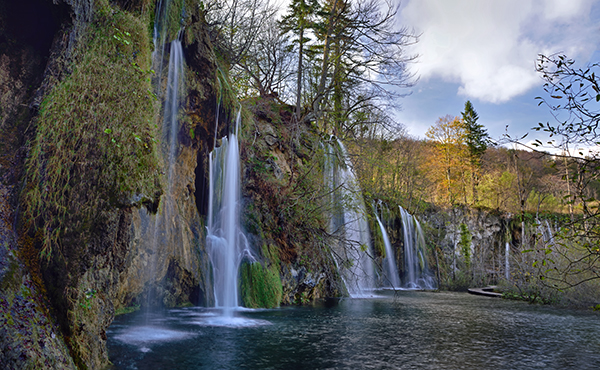
Galovacki Buk Waterfalls.
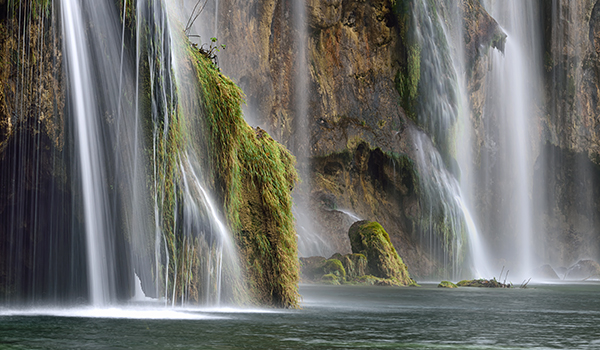
Galovacki Buk Waterfalls.

Galovacki Buk Waterfalls.
We arrived on Sunday evening and had an early start after breakfast on Monday. The weather was extremely bright with little or no cloud cover (not ideal for our purpose) and a temperature of 24°, which over the next few days plunged to practically freezing with a fall of snow by the middle of the week. We spent most of the morning on the first day shooting some landscapes and a number of smaller waterfall systems around Kozjak and Milanovac lakes; eventually making our way down to the lower waterfall system at Kaluderovac. The crystal clear lakes provided wonderful views of the hundreds of fish that were to be seen along the shoreline paths. Croatia and Plitvice had exceptional levels of rainfall during spring and summer of this year. This had a direct bearing on the volume and flow in the various waterfall systems, which was much greater than one would expect in the autumn.
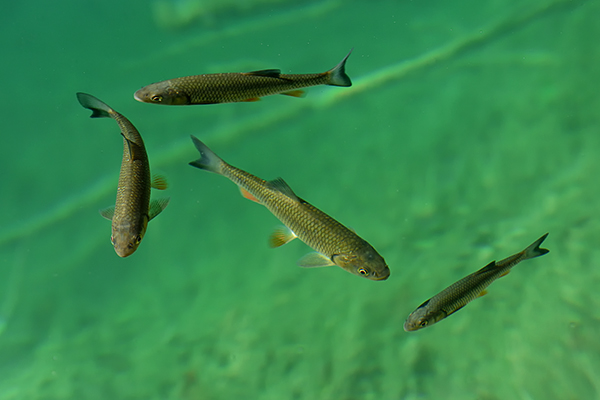
European Chub Leuciscus cephalus
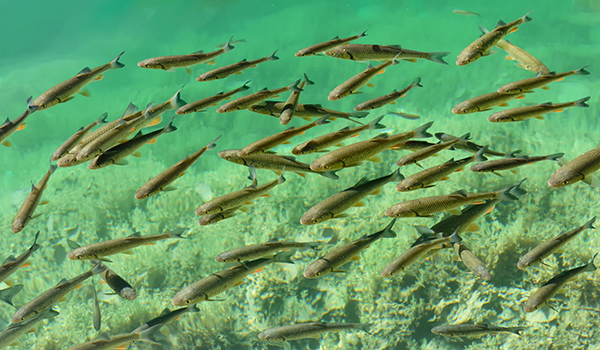
European Chub Leuciscus cephalus
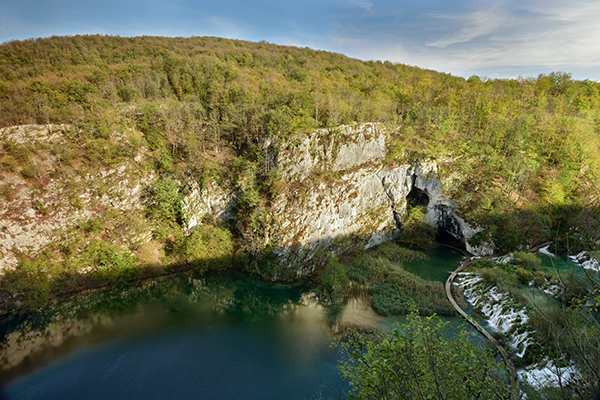
Waterfalls at Gavanovac Lake.
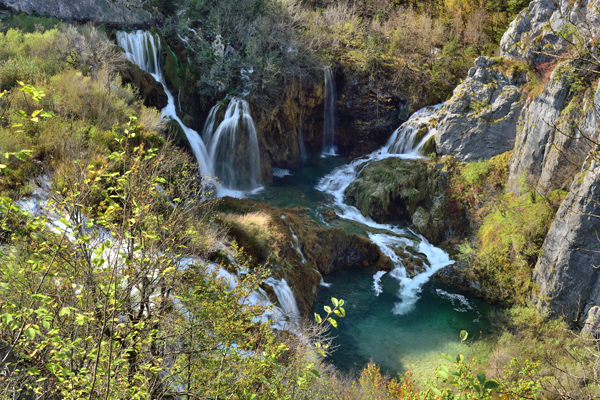
The lower waterfalls below Veliki Slap.
I have always found Plitvice visually stunning. However, capturing the overall ambiance of this picturesque gorge is somewhat challenging. At this particular time of the year the sun is at a much lower angle and many of the waterfalls are often lit at the top while the lower parts are often in shadow. A large number are also north facing, which means you are often shooting into the light. However, having said that it is still a magical place and when conditions are in your favour it is capable of providing the photographer with a plenty of opportunities, challenging as they may be.
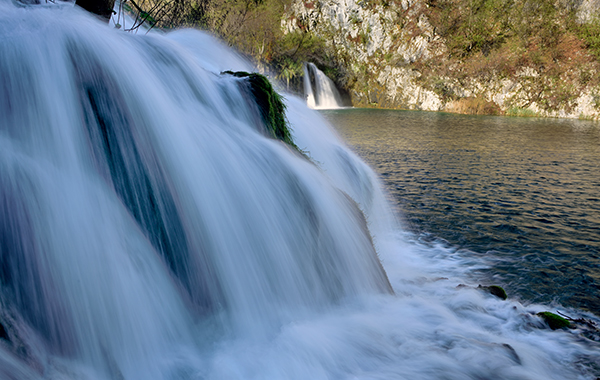
Waterfalls at Gavanovac Lake.
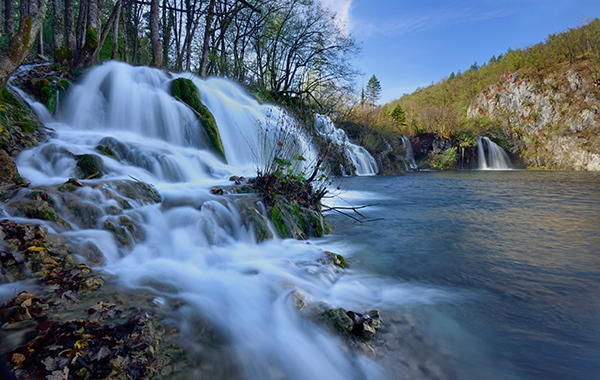
Waterfalls at Gavanovac Lake.
The autumn colour lacked harmonisation this season; the wet summer obviously had an effect on the colour, which lacked the normal vibrancy found in most years. Many of the leaves had already fallen and those that remained were still predominantly green. Fungi were also lacking, which is surprising as it can produce quite a range of species in a good year. By midweek, the temperature had dropped and in the early hours of Wednesday morning we woke to a persistent thunderstorm and a deluge of rain followed by snow, which made many of the upper waterfalls treacherous to navigate on the viewing platforms. Visibility was extremely poor in the snow blizzard; cameras and most of our lenses developed condensation which rendered them useless for quite a while. We returned to the Galovac Lake in the afternoon and concentrated on the waterfall systems in this region. By then it had stopped snowing and virtually all of the visitors had gone leaving the place to ourselves.

Tinder Fungus Fomes fomentarius
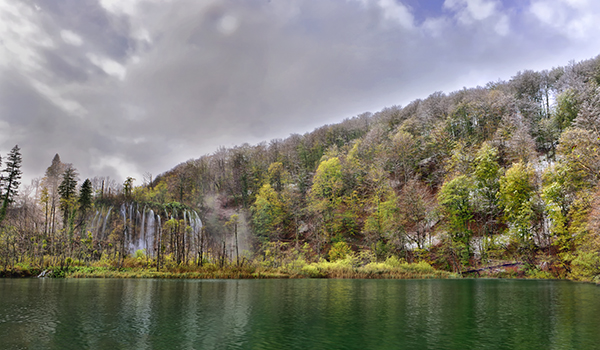
Veliki Prstavac from Gradinsko Lake.

Waterfalls at Okrugljak Lake.
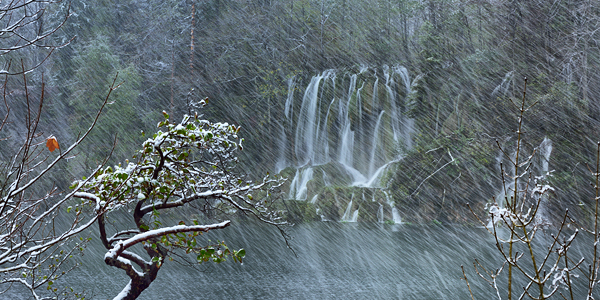
Waterfalls at Okrugljak Lake.
An autumn visit to Plitvice involves a flight to Zagreb, which is possible from Gatwick via Easyjet. However, many of the flights stop at the critical time for the autumn colour. Visiting the park at the end of October is just about the right time, but this year the last flights finished earlier than usual. Nevertheless, we had an interesting time with a diversity of weather conditions during our stay.

